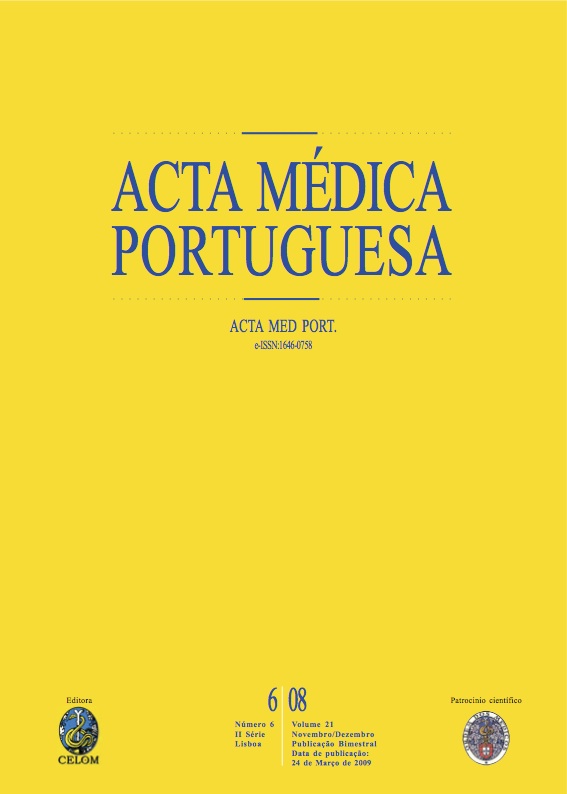Espondilodiscite: experiência de cinco anos de um serviço de reabilitação.
DOI:
https://doi.org/10.20344/amp.822Resumo
Spondylodiscitis is a rare cause of spinal cord lesion. Although this kind of infection is known to have a low incidence; it reflects cases of major clinical interest, since early diagnosis and treatment are determinant reducing morbi-mortality and in improving functional prognosis.To analyse demographic and clinical data; the diagnostic investigations, the rehabilitation programme and the outcome in hospitalised patients.The authors performed a retrospective, descriptive study. They reviewed the medical records of all hospitalised patients in Centro Hospitalar de Coimbra (CHC), between January 2002 and April 2007, with the diagnosis of spondylodiscitis and for which the cooperation of Physical Medicine and Rehabilitation was required.Of the 28 hospitalised patients found, the mean age was 63.5 years (DP +/-15,6); 71% come from a rural environment. The average days of hospitalisation time was 76.6 days (DP +/- 34,2). The most frequent involved agents were Mycobacterium tuberculosis (21%), Staphylococcus aureus (14%) and Brucella mellitensis (14%). In 39% of the cases no agent was identified. The most common clinical manifestations were pain (92%) and neurological sings/symptoms (35%). Of the diagnostic investigations undertaken, MRI (85%), CT scan (67%), increased ESR (60%) and CRP (71%) were the most used. The lumbar spine was the region most frequently involved (67%). In 42% of the cases para-spinal soft-tissue and/or spinal canal were affected. The preferable treatment was the conservative one; there was a need for surgical approach only in two patients. The rising up of the patients constituted the main reason, why the cooperation of Physical Medicine and Rehabilitation was required. In 67% of de cases, the patients were advised to use orthosis and 64% started a rehabilitation programme. Of the 21 patients with a known outcome, 62% recovered completely.The most frequent causative agent was Mycobacterium tuberculosis, having a significant role in spondylodiscitis in our country, attending to its high prevalence. As there is almost always a late diagnosis, a long pharmacological treatment and a slow rehabilitation, there has to be a high rate of suspicion and an early rehabilitation in order to diminish mortality and its economic costs. Physical Medicine and Rehabilitation has a prevailing role in the improvement of the functional prognosis in this disease.Downloads
Downloads
Como Citar
Edição
Secção
Licença
Todos os artigos publicados na AMP são de acesso aberto e cumprem os requisitos das agências de financiamento ou instituições académicas. Relativamente à utilização por terceiros a AMP rege-se pelos termos da licença Creative Commons ‘Atribuição – Uso Não-Comercial – (CC-BY-NC)’.
É da responsabilidade do autor obter permissão para reproduzir figuras, tabelas, etc., de outras publicações. Após a aceitação de um artigo, os autores serão convidados a preencher uma “Declaração de Responsabilidade Autoral e Partilha de Direitos de Autor “(http://www.actamedicaportuguesa.com/info/AMP-NormasPublicacao.pdf) e a “Declaração de Potenciais Conflitos de Interesse” (http://www.icmje.org/conflicts-of-interest) do ICMJE. Será enviado um e-mail ao autor correspondente, confirmando a receção do manuscrito.
Após a publicação, os autores ficam autorizados a disponibilizar os seus artigos em repositórios das suas instituições de origem, desde que mencionem sempre onde foram publicados e de acordo com a licença Creative Commons









